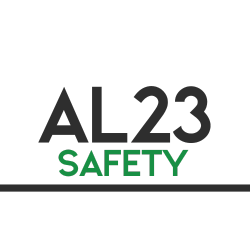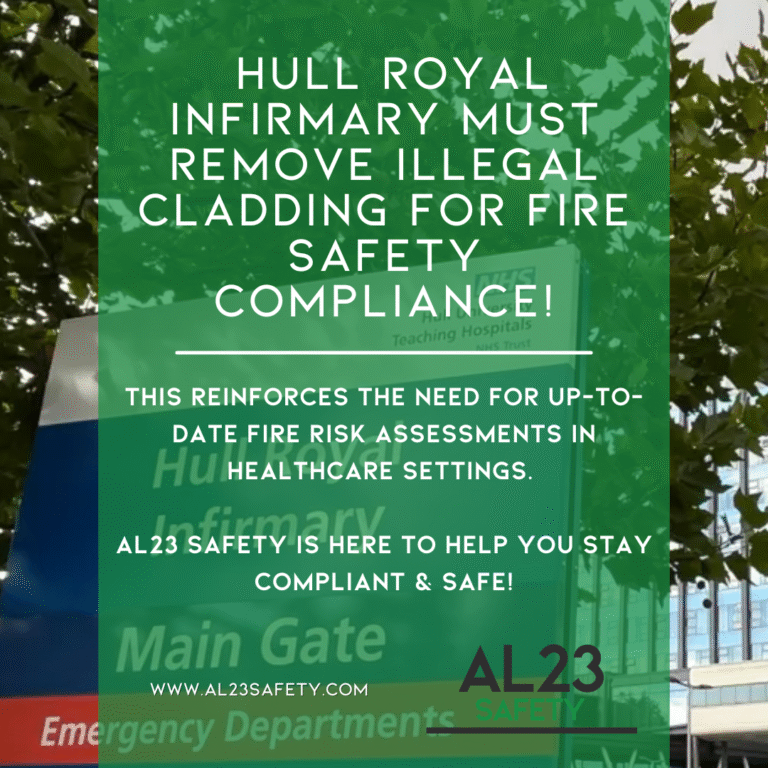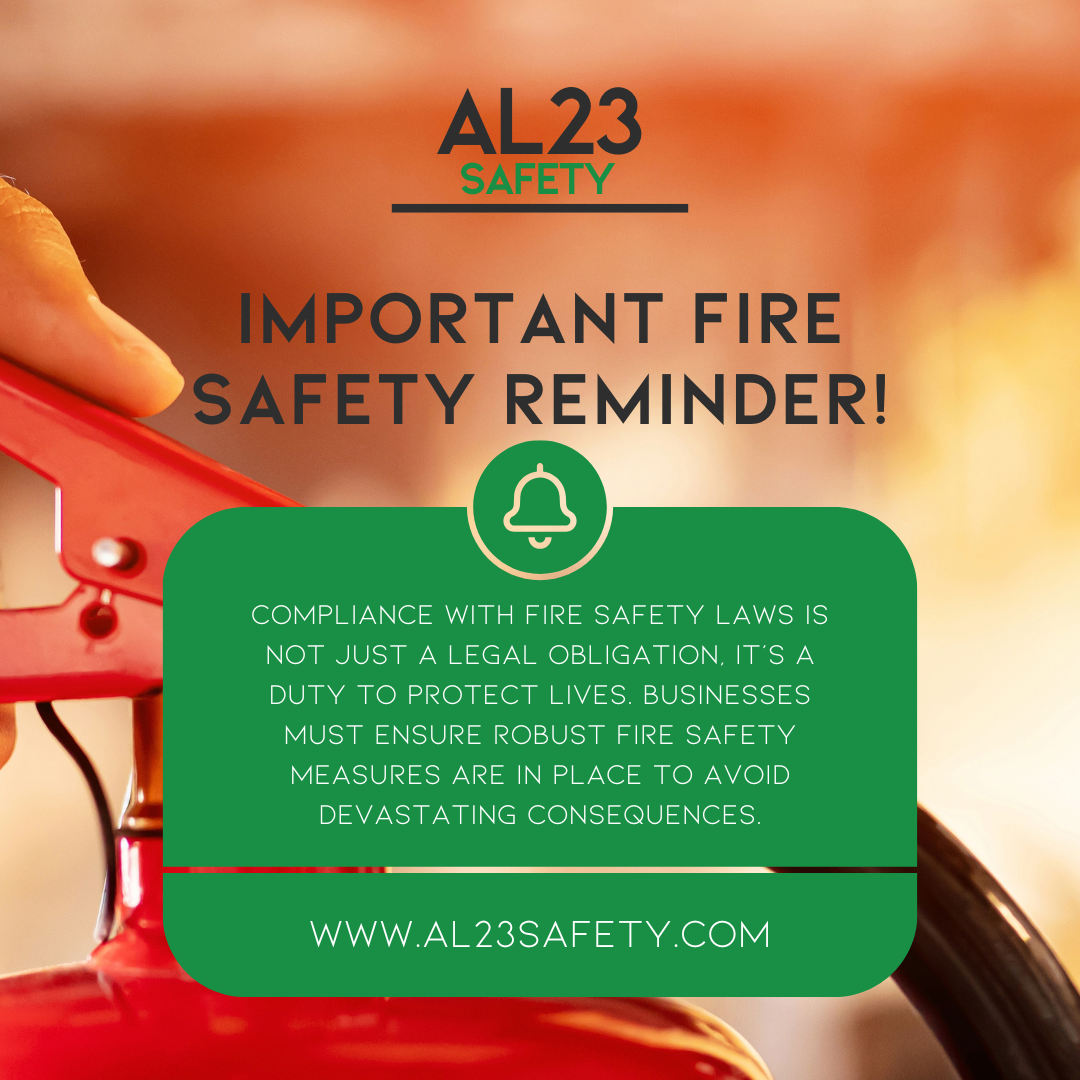Fire safety compliance remains a critical priority for healthcare providers across the UK, especially in light of recent enforcement actions. The Hull Royal Infirmary cladding issue serves as a stark reminder of how quickly standards can evolve, leaving even previously compliant buildings at risk. At AL23 Safety, we specialise in guiding facilities through these challenges, ensuring robust protection for patients, staff, and operations.
Understanding the Hull Royal Infirmary Cladding Crisis
The problems at Hull Royal Infirmary stemmed from cladding and insulation installed between 2013 and 2014. At the time, these materials met existing standards. However, post-Grenfell reforms, including the Building Safety Act 2022, rendered them inadequate. This shift forced an urgent review, highlighting the dangers of outdated materials in high-occupancy settings like hospitals.
Fire safety compliance is not static; it demands ongoing vigilance. Healthcare facilities must regularly assess external elements such as cladding to align with updated UK fire regulations. Failure to do so can result in enforcement notices, costly remediation, and operational halts. The Hull Royal Infirmary cladding saga underscores this, showing how legislative changes can retroactively impact structures built under older guidelines.
The Vital Role of Fire Risk Assessment in Healthcare
Conducting a thorough fire risk assessment is the foundation of effective fire safety compliance. In healthcare environments, where patients may have limited mobility, risks are amplified. Our team at AL23 Safety performs detailed evaluations, examining building layouts, materials, evacuation routes, and occupancy levels.
A proper fire risk assessment identifies hazards like combustible cladding early, allowing for timely interventions. For instance, in the wake of the Hull Royal Infirmary cladding issues, many trusts are prioritising these assessments to avoid similar pitfalls. We recommend integrating them into annual safety protocols, ensuring alignment with UK fire regulations such as the Regulatory Reform (Fire Safety) Order 2005 and the Building Safety Act 2022.
Key Steps in a Professional Fire Risk Assessment
- Site Survey: Inspect all areas, including external facades and internal compartments.
- Hazard Identification: Pinpoint flammable materials and ignition sources.
- Risk Evaluation: Assess impact on vulnerable occupants.
- Action Plan: Recommend upgrades, like replacing non-compliant cladding.
- Documentation: Provide compliant records for audits.
By embedding fire risk assessment into your operations, you not only achieve fire safety compliance but also build resilience against evolving threats.
Developing Tailored Fire Strategies for Compliance
Beyond assessments, crafting a bespoke fire strategy is essential for healthcare fire safety. At AL23 Safety, we design strategies that consider unique facility needs from ward configurations to 24/7 operations. This includes compartmentation, fire doors, and suppression systems that exceed minimum UK fire regulations.
The Hull Royal Infirmary cladding enforcement revealed gaps in proactive planning. With over 600 fire wardens on site, the hospital demonstrated commitment to staffing, yet without integrated strategies, effectiveness wanes. Our approach ensures strategies evolve with legislation, incorporating post-2022 requirements for high-risk buildings.
Enhancing Healthcare Fire Safety Through Training
Training bridges the gap between policy and practice in fire safety compliance. Staff must know how to respond to alarms, evacuate patients, and use extinguishers. We offer specialised programmes, including simulations tailored to healthcare scenarios.
Ongoing training addresses the Hull Royal Infirmary cladding lessons by preparing teams for material-specific risks. UK fire regulations mandate competent persons; our courses certify wardens and managers, reducing human error in emergencies.
Benefits of Continuous Fire Safety Training
- Swift Response: Equips staff to handle incidents efficiently.
- Regulatory Adherence: Meets Health and Safety Executive expectations.
- Confidence Building: Empowers employees, minimising panic.
Investing here directly bolsters healthcare fire safety, turning potential vulnerabilities into strengths.
The Importance of Audits and 24/7 Support
Regular audits are non-negotiable for maintaining fire safety compliance. They verify that measures like cladding upgrades remain effective. However, audits alone aren’t enough, continuous improvement is key.
AL23 Safety provides 24/7 support, offering immediate advice during inspections or incidents. This ongoing partnership helped many clients navigate post-Grenfell changes, avoiding the disruptions faced by Hull Royal Infirmary cladding non-compliance.
5 Urgent Lessons from the Hull Royal Infirmary Cladding Issue
- Legislation Evolves Rapidly: What was compliant yesterday may not be today, review annually.
- Cladding Demands Scrutiny: Test materials against current UK fire regulations.
- Proactive Assessments Save Costs: Early fire risk assessment prevents expensive fixes.
- Training is Ongoing: One-off sessions fall short in dynamic healthcare settings.
- Professional Guidance is Invaluable: Partner with experts for sustained fire safety compliance.
These insights from the Hull Royal Infirmary cladding crisis emphasise urgency. Healthcare providers ignoring them risk fines, closures, and harm.
Why Choose AL23 Safety for Your Fire Safety Compliance Needs
At AL23 Safety, we go beyond checklists. Our consultants bring decades of experience in healthcare fire safety, delivering solutions that integrate seamlessly with your operations. From initial fire risk assessment to strategy implementation and training, we ensure full alignment with UK fire regulations.
The Hull Royal Infirmary cladding enforcement action disrupted services and eroded trust. Don’t let this happen to your facility. By prioritising fire safety compliance now, you protect lives and focus on care delivery.
In conclusion, the evolving demands of UK fire regulations require proactive steps. The lessons from Hull Royal Infirmary cladding issues are clear: invest in expert fire risk assessment, tailored strategies, and continuous training. Contact AL23 Safety today to fortify your healthcare fire safety and secure a compliant future. With our support, achieve peace of mind and operational excellence.



